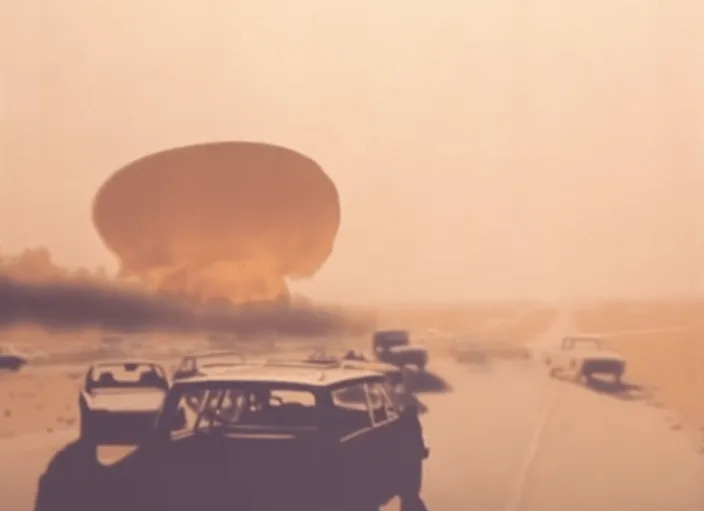The Week
The Day After, all over again
Joel Mathis, Contributing Writer – February 25, 2022

On Nov. 20, 1983, my hometown was devastated by a nuclear attack and just about everybody watched.
Lawrence, Kansas, was the setting of The Day After, an all-star TV movie that depicted nuclear war between the United States and the Soviet Union, along with its terrible aftermath in an all-too-typical Midwestern community. Hundreds of my city’s residents dressed up as injured blast survivors to play extras. Viewers watched Jason Robards survive the blast, only to slowly succumb to sickness from the radioactive fallout. The film ends with John Lithgow calling plaintively on a radio to the outside world, getting no answer.
It was terrifying.
The Day After was also hugely influential. More than 38 million households tuned into the broadcast, one of the largest television audiences of all time. President Ronald Reagan screened the movie at Camp David, then wrote in his diary that it left him “greatly depressed.” Henry Kissinger, William F. Buckley, and Secretary of State George Shultz went on TV to debate nuclear weapons. Many of the rest of us were left with a seemingly permanent sense of dread. By the early 1980s, the era of “duck and cover” had long since passed — the expectation was that an actual nuclear war would amount to Armageddon, the end of humanity itself. The Day After “was a piercing wake-up shriek,” the Bulletin of Atomic Scientists later observed.
One of the best things about the end of the Cold War was that all that dread receded into the background. Yes, the U.S. and Russia still had enough weapons to effectively set the entire planet on fire — but without the everyday possibility of armed conflict, it just didn’t seem that likely.
Now the dread is real again, and rising.
The possibility of nuclear war undergirds the Russian invasion of Ukraine and the world’s response to it. President Biden keeps telling us that no U.S. troops will be sent to defend Ukraine because the possibility of getting into a fight with another state armed with atomic bombs is too much to risk. Vladimir Putin all but explicitly threatened that possibility Wednesday night, warning that countries that interfere with his invasion will suffer “consequences you have never faced in your history.” Jean-Yves Le Drian, the French foreign minister, felt free to push back: “Yes, I think that Vladimir Putin must also understand that the Atlantic alliance is a nuclear alliance,” he said Thursday. “That is all I will say about this.”
Just to underline the point, Russian troops reportedly seized the former Chernobyl nuclear plant during their early attacks.
Even now, for many of us, there is a sense that what is happening is happening over there. But The Day After remains a reminder that in a world where missiles can carry unthinkable destruction around the world within minutes, that’s not entirely true. You don’t have to be directly threatened by the violence in Ukraine to fear what might happen next.
